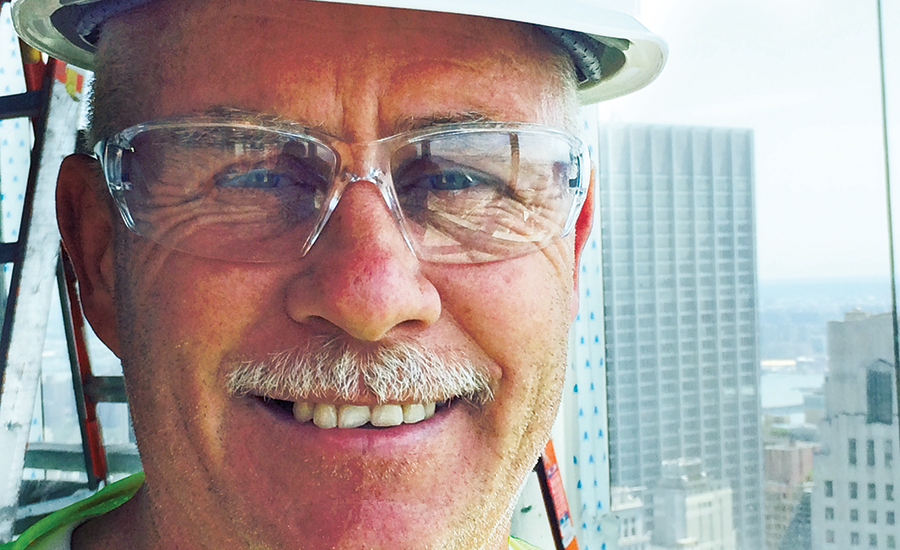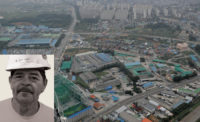Maurice O’Connor has reached a satisfying place in life by building out the interior walls in Manhattan’s landmarks and skyscrapers. One day this spring, he led a visitor around an apartment tower called 50 West, near the island’s southern tip. Boasting or complaining isn’t his style.
By age 18, O’Connor left County Kerry, Ireland—his home and a comely tourist destination that was short on opportunity. He set up in New York City’s northern suburbs with the help of more established Irish immigrants, working his way from house painter to carpenter to union apprentice to journeyman and foreman for Component Assembly Systems, based in Pelham, N.Y. He and his co-workers honeycomb the bare building frames with drywall and studs, doors and cabinets, from bottom track to top, working from the floor slabs up through the building. He and his crew frame, hang, plumb and insulate. O’Connor remembers his first day as a union member, learning that “there was no stopping every five minutes.” The foreman kept a sharp eye on apprentices. “You learned a work ethic,” he says.

“In America, the great thing is, if you work hard, you get rewarded.”
–Maurice O’Connor (53),
Carpenter and
Foreman
Hawthorne, N.Y.
Component Assembly
Systems and Local 279
Almost as an afterthought, O’Connor mentions some of his career-defining projects: 432 Park, the Plaza Hotel, the National September 11 Memorial & Museum. He says, “In America, the great thing is, if you work hard, you get rewarded.”
The reward for steady employment with Component Assembly, including during the recession and 28 years of union membership, is a house in the suburbs where he and his wife, Carolann, raised five children. He also has economic security: Under agreements with the union wall-and-ceiling contractors, New York City-area journeymen and foremen are paid an hourly wage rate of $45.51 to $55.50 an hour.
Exercising daily and having suffered no severe injuries, O’Connor has no immediate plans to retire, adding, “My body will tell me when it’s time.” Component Assembly’s safety practices are impeccable, and the firm quickly supplies any tool needed to do a job better or safer, he says.
As he looks over the city’s upper harbor and the Statute of Liberty, O’Connor says he is anticipating another field of work: grandfathering. “If my kids are looking for babysitters, they’ll have me and my wife,” he says.
Then, his thoughts shift back to his workday: encouraging everyone to wear safety glasses, providing data the company uses to track the current job, and confirming that a delivery of sheetrock and studs arrives at the dock and everything goes to the right place.
|
Back to Craft Workers Open Up About Their Careers |




Post a comment to this article
Report Abusive Comment